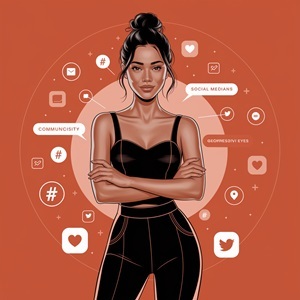In the dynamic world of social media, Facebook Emoticons and Likes for Posts have become essential tools for users and businesses alike to communicate emotions, boost engagement, and create meaningful interactions. This blog explores how these features work and why they matter.
Introduction
Facebook remains one of the largest social media platforms globally, connecting billions of users daily. Among its many features, emoticons (or reactions) and likes play a critical role in how users express feelings, respond to content, and interact with others.
Whether you are an individual sharing personal updates or a business promoting products, understanding Facebook Emoticons and Likes For Posts can help you leverage these tools effectively to grow your presence and build stronger connections.
What Are Facebook Emoticons and Likes?
Likes
Originally, Facebook introduced the simple “Like” button to allow users to express approval or enjoyment of a post with just one click. Over time, it has become the quickest and most popular way to show appreciation for photos, status updates, videos, and comments.
Emoticons (Reactions)
In 2016, Facebook expanded beyond the simple “Like” by introducing Reactions—a set of emoticons that include:
- Like (thumbs up)
- Love (heart)
- Haha (laughing face)
- Wow (surprised face)
- Sad (crying face)
- Angry (angry face)
These emoticons allow users to express a broader range of emotions with a single click, making interactions richer and more nuanced.
Why Are Facebook Emoticons and Likes Important?
1. Expressing Emotions Quickly and Clearly
Text-based posts can sometimes be misinterpreted. Emoticons provide a universal visual language, helping users communicate emotions instantly without typing long responses.
For example, a heartfelt post might receive “Love” reactions, while a humorous meme may get “Haha” reactions. This makes feedback more accurate and engaging.
2. Increasing Post Engagement
Posts with higher numbers of likes and reactions tend to perform better on Facebook’s news feed algorithm. This means your content is more likely to be seen by friends, followers, or customers, increasing visibility organically.
3. Providing Feedback to Content Creators
For businesses, emoticons and likes act as instant feedback from their audience. Understanding which emotions a post triggers can guide future content strategies, product launches, or marketing campaigns.
4. Enhancing Community and Connection
Reacting with emoticons fosters a sense of connection and belonging among users. People feel heard and appreciated, which encourages more frequent and meaningful interactions.
How to Use Facebook Emoticons and Likes for Posts Better Engagement
1. Encourage Reactions with Engaging Content
Create posts that evoke emotions—whether it’s humor, inspiration, surprise, or empathy. Emotionally charged content is more likely to get a variety of reactions.
2. Ask Questions or Use Calls to Action
Invite your audience to react by asking questions or prompting them to use specific emoticons. For example, “React with a ❤️ if you love this idea!”
3. Respond to Reactions
Engage back with your audience by replying to comments and acknowledging their reactions. This builds rapport and community trust.
4. Use Emoticons in Comments and Replies
Don’t just limit emoticons to posts; use them in replies to make conversations more lively and relatable.
The Impact of Facebook Emoticons and Likes for Posts on Marketing
1. Improved Analytics
Facebook’s Insights tool tracks reactions and likes, giving marketers data on how their audience feels about different types of content.
2. Refining Content Strategy
Analyzing which emoticons dominate can help marketers tailor content to audience preferences. For example, posts receiving more “Wow” or “Love” reactions indicate what resonates emotionally.
3. Boosting Brand Loyalty
When brands respond to reactions and create content that elicits positive emotions, they strengthen customer loyalty and trust.
4. Ad Targeting Enhancements
Marketers can leverage engagement data to target ads more effectively to users who have shown particular emotional responses in the past.
Common Mistakes to Avoid
- Ignoring Negative Reactions: Don’t dismiss “Sad” or “Angry” reactions. Instead, address concerns or feedback constructively.
- Overusing Calls to Action: While encouraging reactions is helpful, too many calls to action may seem spammy or desperate.
- Not Engaging Back: Leaving audience reactions unacknowledged can hurt engagement and follower retention.
- Using Emoticons Inappropriately: Make sure the emoticon matches the context. For example, avoid using “Haha” on serious or sensitive posts.
Future of Facebook Emoticons and Likes for Posts
Facebook continually evolves its engagement tools. We may soon see more personalized reactions, animated emoticons, or AI-driven emotional analytics that provide deeper insights into user sentiment.
For users and marketers alike, staying updated with these features will be key to maintaining strong connections and relevance on the platform.
Conclusion
Facebook Emoticons and Likes for Posts are much more than simple icons—they are powerful tools that enhance communication, increase engagement, and provide valuable feedback. For businesses and individuals wanting to succeed on Facebook, mastering the use of emoticons and likes is essential.
By creating emotionally engaging content, encouraging meaningful reactions, and responding thoughtfully, you can foster a vibrant online community and boost your visibility.







